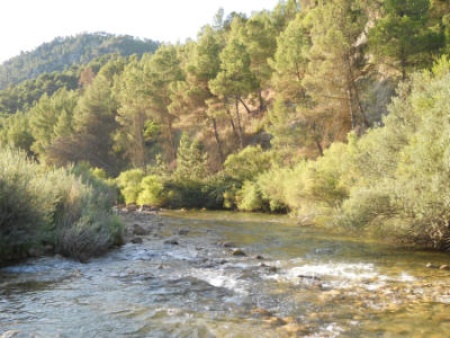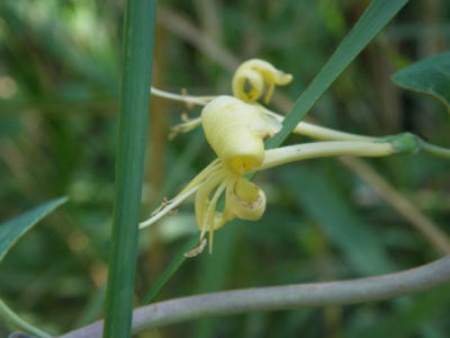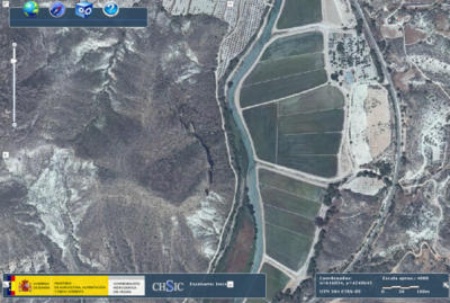


Rivers are highly valuable ecosystems from both an ecological and an environmental point of view. In spite of amounting for only a small amount of surface compared to terrestrial ecosystems, they are unique, not only because of its high diversity of species, but also for it the role they play, and for the processes implied in its functioning; this makes them, on one hand, true islands of genetic, taxonomic and functional biodiversity (WCMS,1998), and, on the other hand, communication pathways between different ecosystems (**).
Nevertheless, intensive water exploitation and use of fertile lands on the banks of the Segura River, have caused a decay in the ecological status of a key ecosystem such as the riparian forest, and that decay has eased the colonization of the area by Alien Invasive Species that at times, like with Arundo donax dominated reedbeds, form a monospecific community.
Native habitats are richer in biodiversity than those dominated by AIS, because they generate a wider variety of niches where native species can settle. Because of this, favoring its development is key to keeping a sustainable environment and to promote Climate Change adaptation and mitigation.

River Segura at Cañaverosa
Segura River is the backbone of its basin. Its source is at ‘Pontones’ (province of Jaén) and it travels through 352 km before reaching its mouth at ‘Guardamar del Segura’ (in Alicante province). Its location in a Mediterranean area, characterized by a climate of large contrasts, together with an uneven topography and complex geological history, determine the presence of a wide variety of ecosystems that make the Segura one of the most diverse rivers in the Iberian Peninsula, home to several Iberian fish endemic species, a rich associated fauna and a special riparian vegetation, escorting the river and forming a mosaic of different environments and communities.

Rough bindweed (Smilax aspera)
One of the most immediate effects of agriculture is the occupation of many adjacent lands for crops, evicting or eliminating native riparian vegetation, which has multiple ecological functions: habitat for other species, ecological corridor, biological filter preventing the entry of fertilizers and pesticides into the water, etc.

Elimination of riparian forest for crops
The Water Framework Directive (2000/60/EC) had as main goals to protect, enhance and regenerate all superficial water bodies for them to achieve good ecological status before 2015. In order to achieve this good status, the god health of riparian forest is key, as a warrant for the vertical, longitudinal and horizontal continuity of the river and as a true green infrastructure performing many ecosystemic services, including the enhancement of water quality, and a decrease of the incidence of agronomic pests, due to the typical homeostatic effect of mature, complex ecosystems.
To achieve this, we will be using different weapons: nature itself (through natural ecosystem succession), Information technologies, with the creation of a mobile app to report the detection of potentially Alien Invasive Species, and, as a key element, public participation through volunteering activities and land stewardship agreements.
This last element is paramount, since it is the people inhabiting the vicinity of the river that are the ecosystem’s first line of defense, and it is essential that they understand its importance and commit to cooperate in its protection, also resulting in a greater sense of belonging: the river as a common heritage and the neighbors as a fundamental part of its defense.
(*) Ripisilva: from latin ripa, riverbank; and silva, forest